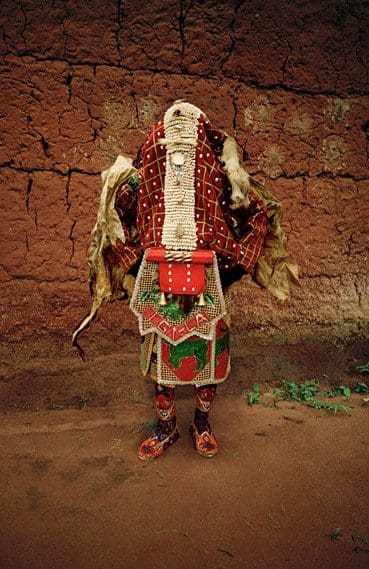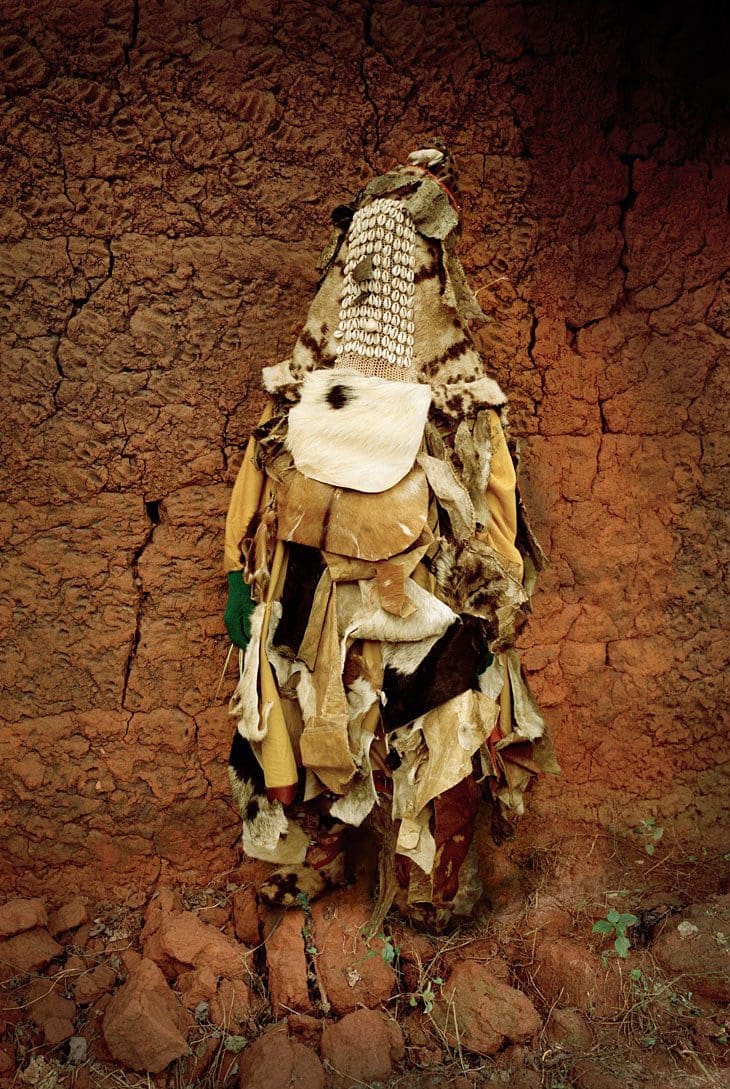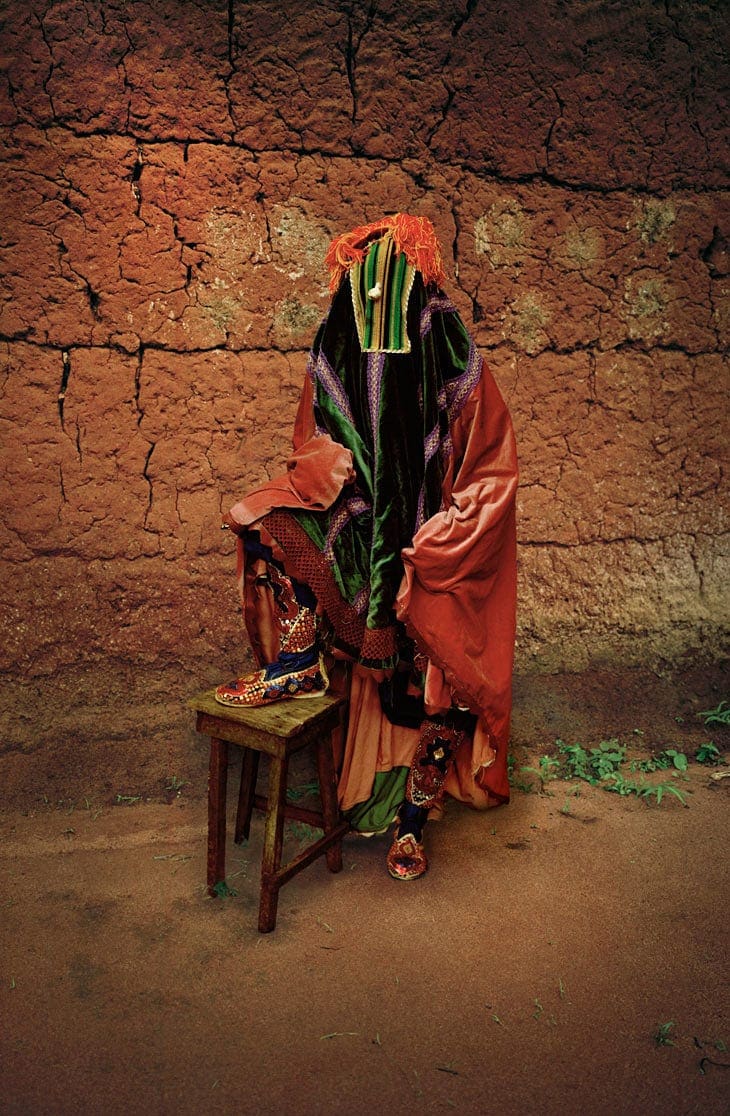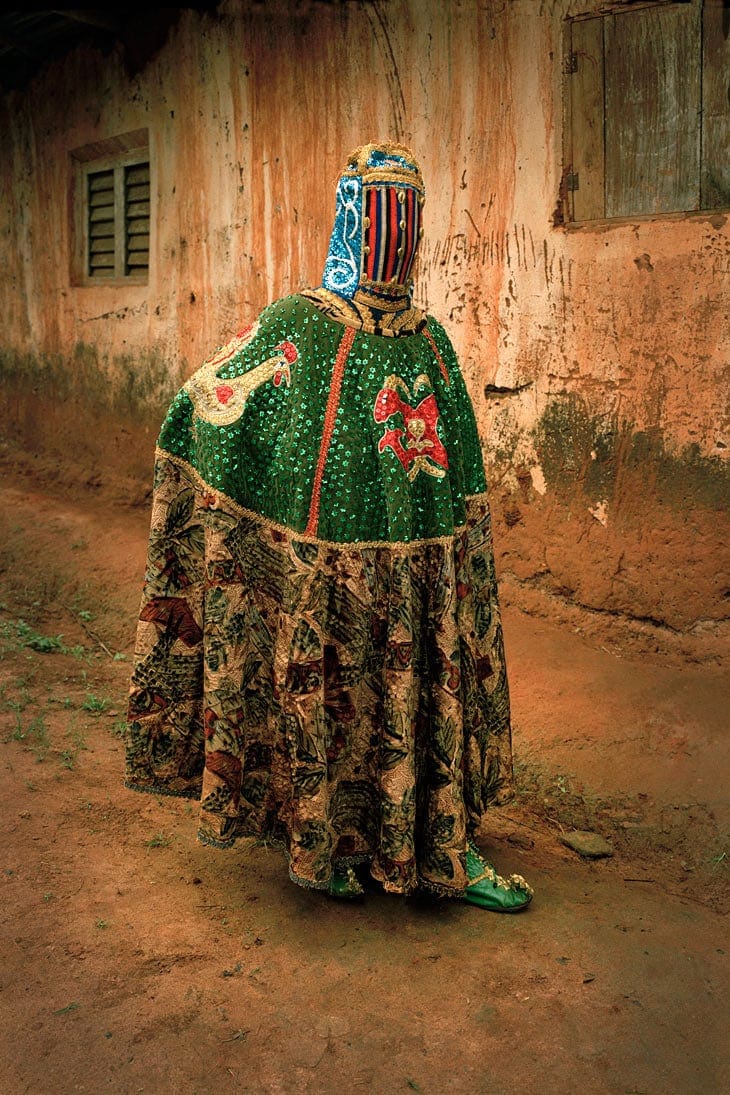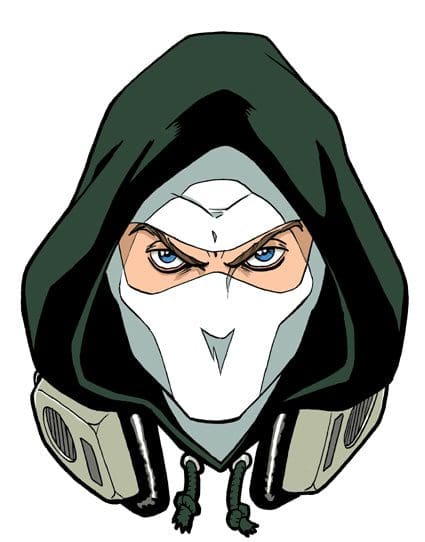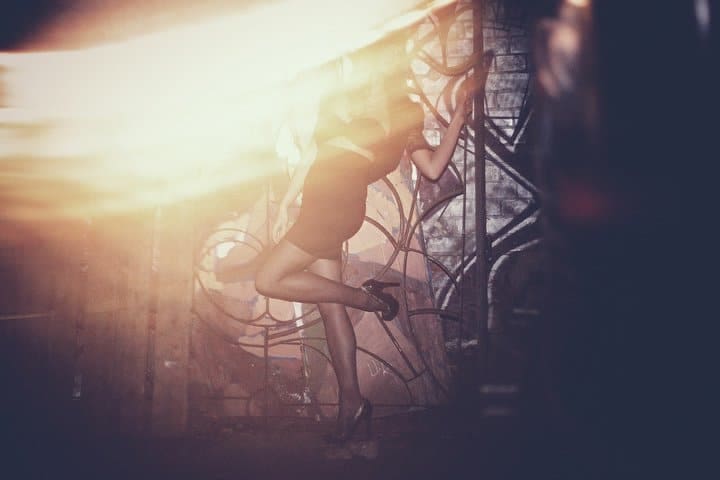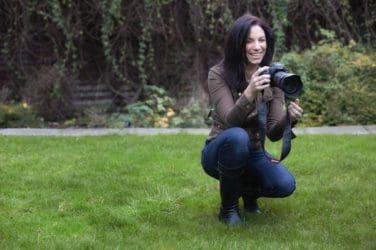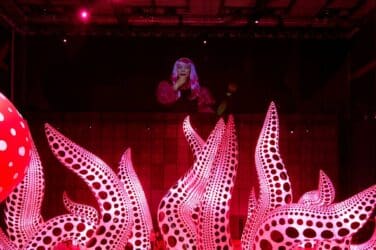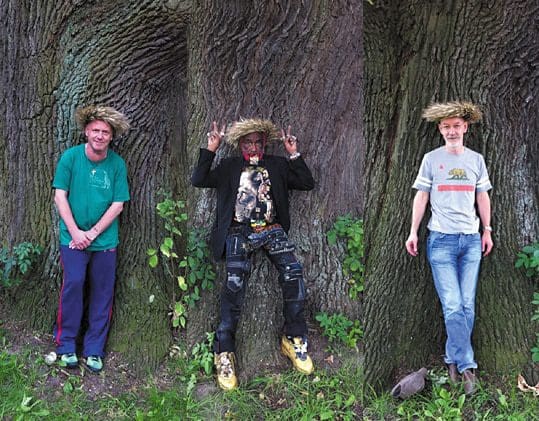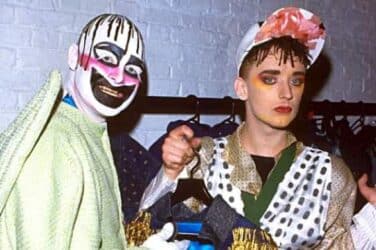by Claire Ramtuhul
The Many Masks of the Egungun
Amidst the wealth of photographs on offer at the Saatchi Gallery’s latest exhibition, ‘Out of Focus’, four modestly sized works tempt the eye more than many of the larger pieces combined: a series of masked figures clad in wildly beautiful ceremonial robes draw substantial clusters of intrigued visitors to their attention, through stances that command rather than invite. The lure of fascination is understandable: the portraits hold secrets as well as revelations, shrouded quite literally in gilded mystery.
Even after a period of prolonged gazing, it’s difficult to recall anything wholly familiar from existing points of reference. The colourful grandeur, the exquisite layering of material, and the sandy-coloured mud brick backdrops are recognisable as African, yet the connection is muddled by other styles, notably the pointed toes of Persian-esque slippers just visible under the billowing fabrics. The costumes are in fact derived from the little-known traditions of the Yoruba people, specifically those from south-Western Nigeria and the Republic of Benin. Born and raised in Benin’s capital Porto Nova, Leonce Raphael Agbodjelou was trained in photography by his father, the world-renowned Joseph Moise Agbodjelou. In his latest series, the junior photographer has brought one of the most captivating aspects of Yoruba culture, the Egungun masqueraders, to an international platform. Responsible for a plethora of community duties, the Egungun are effectively multi-purpose performers, taking on a variety of roles which encompass spiritual rituals as well as acrobatic displays. Revered to this day, they are pillars of the community that few outside Yoruba societies are aware of.
The costumes themselves are incredibly decorative, each crafted with the utmost care to include unique variations. Whilst some are made of glittering textured fabrics and embroidery, others, like the Adjeran, are made entirely out of animal skins – “they are savage characters”, says Leonce. The rounder figures, Ade, are responsible for entertaining the festival crowds in fantastical displays, and are particular favourites of the photographer. “The designs are created by specialist tailors called ‘Alarans’”, says Leonce. “These positions are sacred and often occupied by elders in the community. In the lead up to and during ceremonies, the designers dedicate 100% of their time to the costumes. The work takes place in hidden locations and it’s impossible to gain access to the studios without special permission”. It’s not only the process of making the clothes that is veiled in mystery – Leonce remains fairly tight-lipped about the inspiration behind the designs, careful not to compromise the trust of the tribal chiefs.
Despite there being a great deal of secrecy around the Egungun, the photographer’s artistic freedom was not compromised: “Stylistically, I had a lot of input”, says Leonce. “I chose the mud backgrounds because it was often used by photographers from my father’s generation. There is an element of tradition about it. It adds a timeless quality”. Interestingly, although the Egungun date back to the 11th Century A.D., the tradition that Leonce’s composition coveys is far from fixed in an established creative mode: “The styles are constantly changing, and huge amounts of resources go into creating new fashions. They change dramatically with generations”.
As well as skilfully setting up a contrast between tradition and change, the images also present a more visible dialogue between the supernatural and the earthly. Though the Egungun are deeply spiritual figures, their stances are unmistakeably human – some pose regally with hands on hips, basking in the glory of their own gravitas, performing for the camera. Their sense of pride is plain to see from the other side of the room, and it’s this humanising element which makes their appearances slightly less terrifying.
The theatrical tradition of ancient Greece crosses my mind when viewing the Egunguns’s covered faces, another form of cultural life in which masked performers did not merely entertain, but were called upon to participate in events more akin to religious ceremonies. But this vague appropriation of Western heritage does little to satisfy: whilst actors in ancient Greece were ordinary men picked randomly from the polis, the Egungun are as feared and respected as gods themselves, and present a much stronger connection to supernatural world for the Yoruba. Leonce’s work is truly unique in that it comes from within the world of the tribe, and is composed with a deeper level of understanding that an outsider would struggle to achieve. Both genuinely respectful yet subtly provocative, he makes it easy to get caught up in the mysticism of the Egungun.
‘Out of Focus: Photography’ including Leonce Raphael Agbodjelou is on at the Saatchi Gallery until 22 July 2012. www.saatchi-gallery.co.uk
Leonce Raphael Agbodjelou Artist Feature by Claire Ramtuhul


